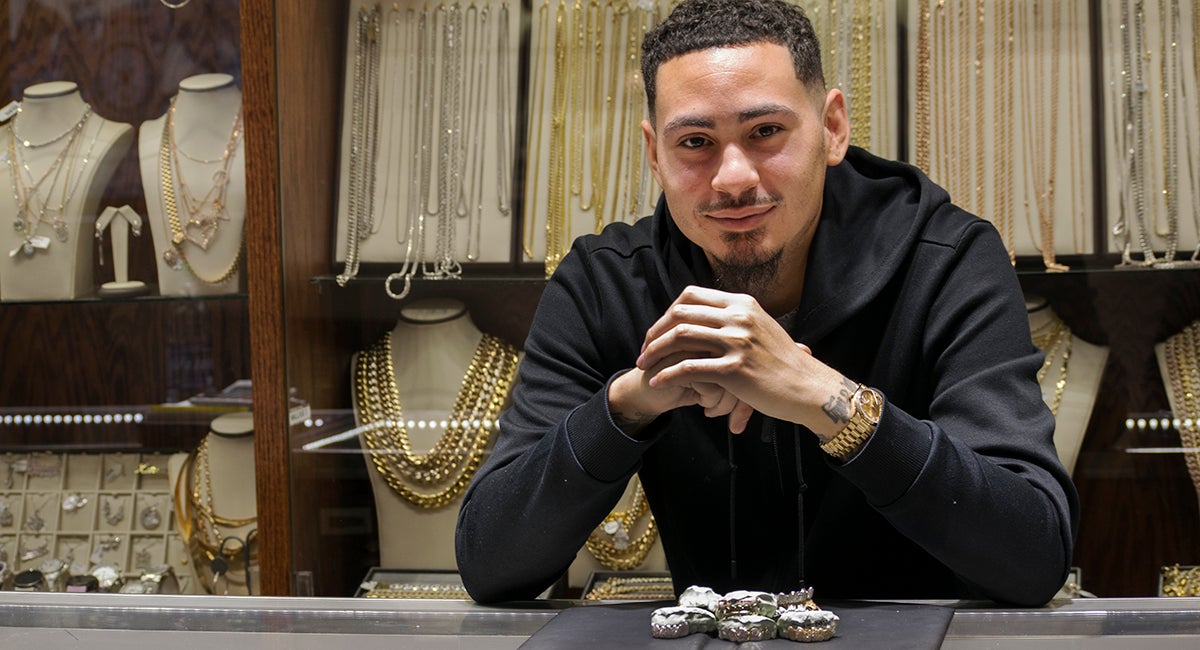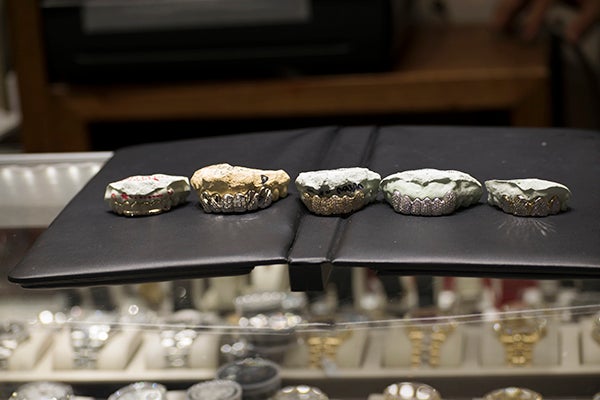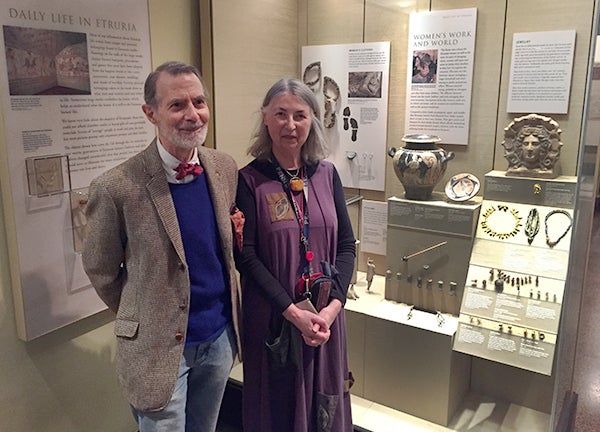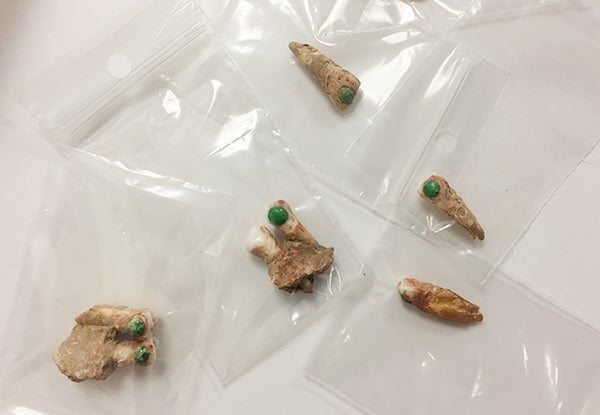Grillz have always been a big deal from the Etruscans to Meek Mill
Listen
Alex Hernandez
Who is the new aristocracy investing in mouth décor? One sales representative says his clientele includes “a lot of athletes, a lot of celebrities, some rappers, singers, to your normal everyday folks.”
At Philadelphia’s Shyne Jewelers, immaculately clean display cases show off gold and diamond adornments. Sales representative Alex Hernandez brings out a box stuffed with paper envelopes, and starts unpacking the contents of each one. When he finishes, “grillz” – decorative caps for teeth – mounted on the green-blue molds of his customers’ teeth, gleam on the glass.
 Some of the grillz made by Shyne Jewelers. They’re custom made to fit customers’ teeth. (Alex Stern/The Pulse)
Some of the grillz made by Shyne Jewelers. They’re custom made to fit customers’ teeth. (Alex Stern/The Pulse)
Some of them are plain gold. Some have diamond accents. “Or we could do fully diamond in a pave setting,” Hernandez says, holding a full top front studded with jewels. This model, with 4.5 karats of diamonds set in gold, goes for $3,500.
“It’s just all about fashion when it comes down to the grillz,” Hernandez said.
He receives 30 to 40 orders per week and has made pieces for everybody from Meek Mill to Rich the Kid, and Shy Glizzy.
Just a repetition
“The whole grillz phenomenon is just a repetition of Etruscan dental ornamentation,” said Marshall Becker, professor emeritus at West Chester University. He and a scholar at the University of Pennsylvania Museum, Jean Turfa, have been looking at what you could call the first grillz in the historic record.
 Researchers Marshall Becker and Jean Turfa have been studying Etruscan dental decoration, what could be considered an ancient precursor to grillz.
Researchers Marshall Becker and Jean Turfa have been studying Etruscan dental decoration, what could be considered an ancient precursor to grillz.
“They’re very simple. It’s a thin, gold band about a quarter, a half centimeter wide roughly and in the center of it will be the replacement tooth,” Turfa explained. She said upper class Etruscan women, who lived about 2,500 years ago in Italy, wore them. Usually they’d remove their front teeth, file the roots down, insert them into the gold bands, and the bands would go around other teeth. These women were kind of renegades.
“It being Etruscans, their women had a much freer life than any of the surrounding cultures, the Roman, the Greeks. They were horrified at Etruscan women because they literally drove their own chariots, owned factories, used their maiden names. And it was an affront to other societies apparently,” Turfa said.
Very few of the Etruscan dental decorations survive, so it’s been hard to really tease out their history. But Turfa thinks this was cosmetic, not medical tooth work.
“We’ve looked to ethnographic parallels for some of this,” Turfa said. “And even today in the world and in the middle ages in Asia people deliberately removed teeth as part of a ritual for coming of age or getting married or for mourning for an important family member or individual.”
Other examples of mouth beautification exist, too. Mayan royalty, about 1,500 years ago, adorned their teeth with jade inlays.
 Teeth with jade inlays from a Mayan king, K’inich Yo’nal Ahk II, who ruled from 687 to 729. (Irina Zhorov)
Teeth with jade inlays from a Mayan king, K’inich Yo’nal Ahk II, who ruled from 687 to 729. (Irina Zhorov)
At the University of Pennsylvania Museum of Archaeology and Anthropology, in Philadelphia, Simon Martin brought out a clear plastic box containing what he believes are a Mayan king’s teeth. The teeth have round jade inlays, like candy dots in the center of the teeth. Researchers think the green inlays were a way for the royalty to get closer to the god of maize.
“Ironically, each in their own way, it’s about beautification. Our ideal today is that teeth should be be straight and white, and in ancient Maya civilization ideally they should have green pieces in them and they might be filed into weird shapes and the underlying concept might be a little bit different in terms of religion as opposed to purely showing off. But certainly the idea of being more perfect in some way through dental modification is a kind of recurring theme,” Martin said.
In Southeast Asia upper class people’s mouths gleamed with gold some 700 years ago. And all over South and Central America and Central Asia, people still display wealth with gold caps.
Grillz are just the latest iteration of our human penchant for mouth décor.
Becker said when he started seeing grillz appear, he began to collect clippings about it in a file. “At the time I thought it was just one or two oddballs that thought of something interesting that the Etruscans had done,” Becker said.
“But it’s sort of the new aristocracy,” Turfa added.
So who is the new aristocracy investing in mouth décor? Hernandez said his clientele includes “a lot of athletes, a lot of celebrities, some rappers, singers, to your normal everyday folks.”
WHYY is your source for fact-based, in-depth journalism and information. As a nonprofit organization, we rely on financial support from readers like you. Please give today.



